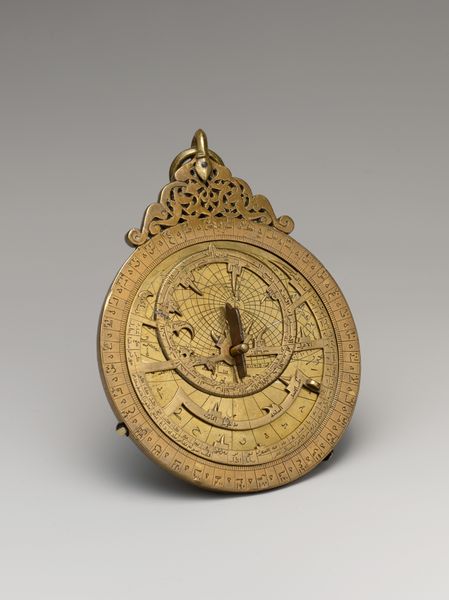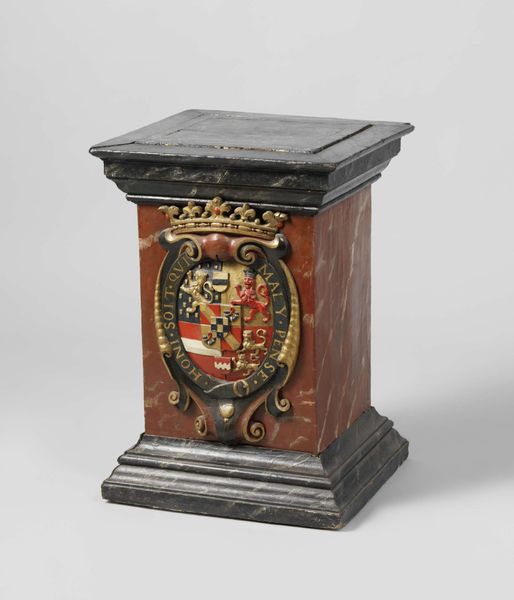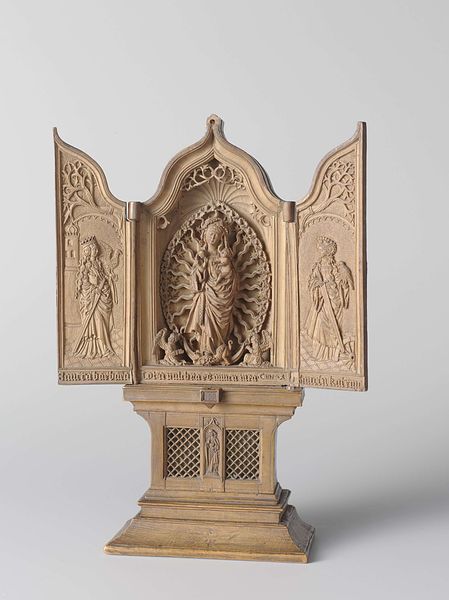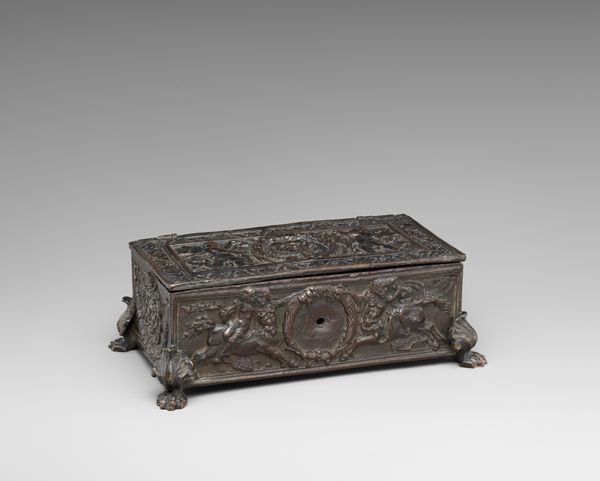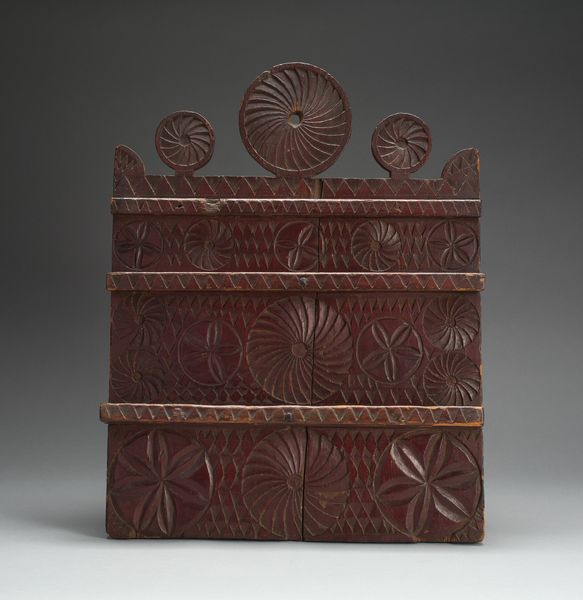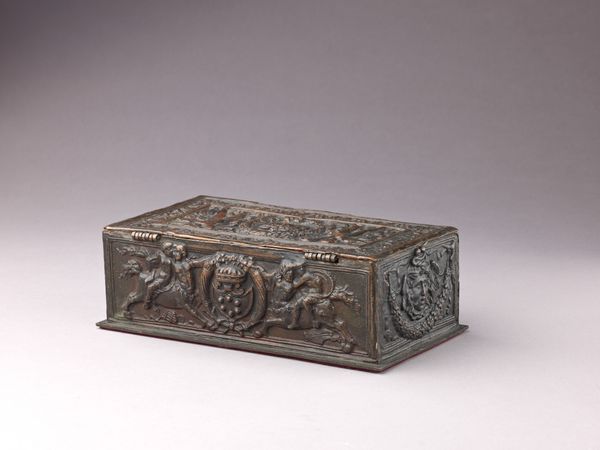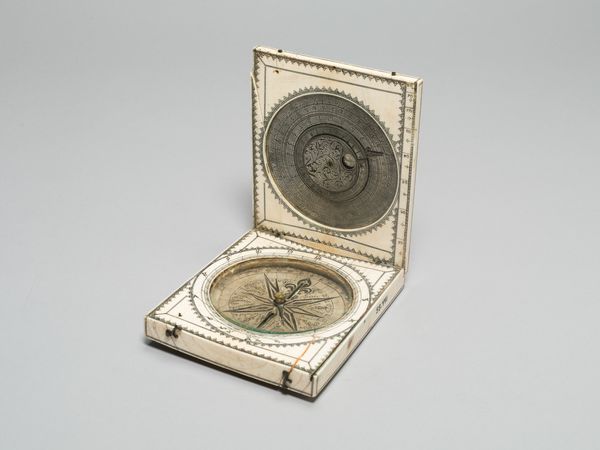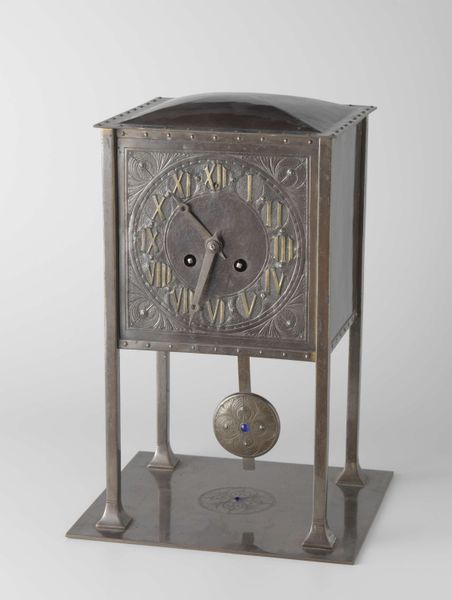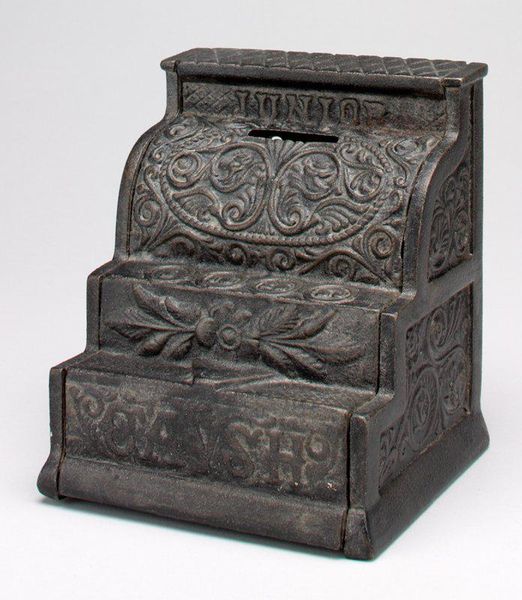
metal, sculpture
#
art-deco
#
metal
#
sculpture
#
geometric
#
sculpture
#
decorative-art
Dimensions: height 24.0 cm, width 28.5 cm, depth 11.5 cm
Copyright: Rijks Museum: Open Domain
Editor: We are looking at a metal Art Deco clock, "Pendule met art deco-ornament," crafted in 1929 by G.H. Lantman. I'm struck by how the curves soften the geometric form; what stands out to you? Curator: Observe how the object's architectonic presence arises not merely from its overall shape, but equally from the tension between line and form. The semiotic play of color on the clock face acts as a secondary framework. Do you notice the implications of using this red within a geometric context? Editor: I do see the red now! The way the red directs your eye to the center, despite its being framed in these flowing flourishes around the edges… What is it about these decorative flourishes, these stylized motifs and curvilinear forms contrasting with that hard geometry? Curator: Indeed. Now, consider the deliberate employment of metal. Its sheen provides a vital tactile experience and structural contrast. Reflect upon what the employment of Art Deco geometry conveys versus the potential interpretations of organic Art Nouveau designs. Do you find a link? Editor: So, the artist uses both organic and constructed elements. But how might you connect it to art theory? Curator: Formalist analysis encourages us to interpret the work by how meaning emerges solely from its arrangement. The negotiation of material properties communicates in subtle visual grammar. Observe the red, the metallic qualities and the curving vs the geometric forms, this creates semiotic relationships between the work’s material and visual vocabulary. Editor: So by looking closely at the object, we have a visual pathway to deconstructing its meaning! That is fascinating. Thank you. Curator: Indeed! Appreciating design rests upon seeing the nuances within material syntax.
Comments
No comments
Be the first to comment and join the conversation on the ultimate creative platform.


